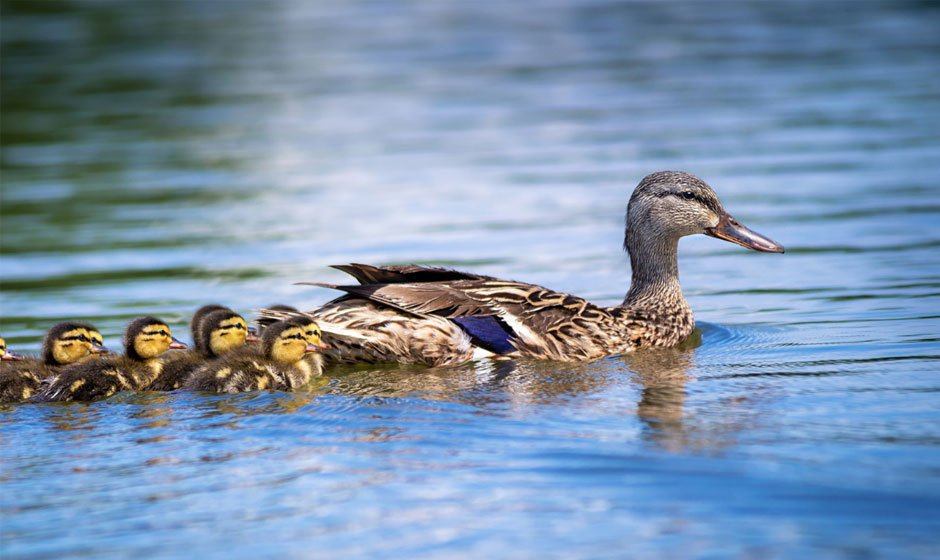Introduction
When it comes to the eating habits of ducks, many people wonder if they possess teeth. After all, ducks consume a variety of foods such as nuts, seeds, insects, grains, fruits, mollusks, and more. However, ducks do not have teeth like tigers, wolves, sharks, cows, pigs, or humans. Instead, they have unique bill structures that enable them to manipulate and consume their food efficiently. In this article, we will explore the different adaptations of a duck’s bill and how these structures aid in their feeding process.
Understanding Duck Bills
Ducks exhibit several specialized bill structures that assist them in consuming their meals. Although their bills are not equipped with actual teeth, they possess the following adaptations:
1. Spatulate Shape
Ducks possess an elongated and flattened bill shape resembling a spoon. This spatulate shape allows them to crush food, although not as effectively as teeth. Ducks do not chew their food repeatedly; instead, they rely on their bill’s spoon-like shape to filter food from water, sand, or mud. The size and flatness of a duck’s bill vary across species and determine their dietary preferences. For instance, ducks with flatter bills incline towards a plant-based diet, consuming algae, seeds, and aquatic grains. Conversely, sharper bills, like those found in mergansers, are specialized for consuming fish. It’s important to note that ducks can bite if provoked or threatened, so caution should be exercised around them.
2. Lamellae
Lamellae are thin, comb- or fringe-like structures located on the sides of a duck’s bill, just inside the bill’s edge. These structures resemble serrated teeth and assist in filtering or straining food from water or mud. While the lamellae are not readily visible unless the bill is open or injured, they play a crucial role in a duck’s feeding process. Similar to ducks, other waterfowl species like geese, swans, and even flamingos possess prominent lamellae.
3. Nail
A small bump, known as a nail, can be found on the upper side of a duck’s bill. The size, shape, and color of the nail may vary, sometimes matching the bill’s overall color or providing a contrasting hue. The nail is instrumental in digging through mud or debris, allowing ducks to uncover small roots, seeds, worms, and other food items. Geese and swans also possess nails on their bills, and in certain duck species, such as lesser scaups and greater scaups, the nail can aid in identification.
4. Grin Patch
The grin patch refers to a smile-like curve on the side of a duck’s bill, exposing the lamellae for easier filtration and feeding. Although the exact purpose of the grin patch is not thoroughly understood, it is believed to enhance the feeding process by making the lamellae more visible. Not all ducks have a grin patch, but it is more commonly observed in geese, swans, and certain penguin species.
Ducks: Non-Chewers with Salivary Glands
Contrary to animals with teeth, ducks do not chew their food extensively. Instead, they employ small nibbling or chewing motions to position morsels within their bills for swallowing. While these motions may break up softer foods to some extent, ducks do not deliberately chew. Interestingly, ducks possess salivary glands that produce saliva, aiding in the swallowing process.
Feeding Ducks: Considerations and Recommendations
For bird enthusiasts eager to feed ducks at local ponds, it is essential to understand their feeding habits. Since ducks swallow their food whole, it is crucial to offer them small-sized items to prevent choking or other difficulties. Opting for nutritious food options like birdseed, cracked corn, or small vegetables such as peas or corn is highly recommended. Larger foods like grapes can be fed to ducks more easily if they are cut into smaller pieces. However, it is important to avoid offering unhealthy foods such as bread, cookies, chips, or popcorn, as these items are detrimental to ducks’ toothless bills.
Conclusion
Ducks possess remarkable bill structures that enable them to consume a wide range of foods without the need for teeth. Understanding the intricacies of a duck’s bill and its role in their feeding process provides valuable insights into their behavior and dietary preferences. By appreciating the unique adaptations of ducks, we can develop a deeper admiration for these fascinating avian creatures and their extraordinary bill structures.









